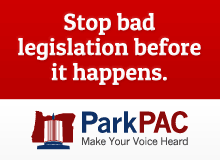Answer. There is no such form. Perhaps there should be. But first, let's address some threshold issues, such as:
- Who owns the structure?
- Who has the duty to maintain it?
- What happens to it when the tenant vacates the space?
- Who would likely be held liable for injuries to persons/property using the structure?
If the structure was there when the resident first rented or leased the space, there isn'tmuch question but that the landlord "owns" it, if it remains there when the space is re-rented or re-leased. Although most rental/lease agreements and rules require the resident to "maintain" the space, in most instances, the text of these provision generally apply to landscaping-type activities. If the structure is expressly identified in the park documents, and allocates maintenance responsibility to the resident, then the issue is clearer. But it is my opinion that if the documents are silent about park-owned structures on the space, the duty to maintain, paint, etc., lies with the landlord. Why? Because the landlord drafted or selected the documents for the resident to sign, and accordingly, could have delegated the responsibility in whatever manner he/she saw fit. Having failed to do so, means that the agreement or rule will most likely be construed most strictly "against the drafter" - i.e. to the landlord.
Clearly, if the structure was on the space at the inception of the tenancy (therefor presumptively belonging to the landlord), when the resident departs, it would remain there. Similarly, if some liability occurred, it would fall on the landlord, unless it was from an event caused by the resident.
For example, say there is a storage shed located on the space at the start of the tenancy, and nothing is said in the park documents about maintenance responsibility. The resident uses the shed to store family items, including old photos and collectibles. Unbeknownst to the resident, the shed is not completely water resistant, and over the course of the winter, they are destroyed. Unless there is some evidence the resident knew about the leakage and did nothing to protect their belongings, this is likely a landlord liability.
Is this an instance in which the landlord could protect themselves by having a release of liability agreement saying that the resident assumes all responsibility for destruction or loss of any valuables stored in the shed? Possibly, but not absolutely. In other words, the more specific the agreement was, the better the chances are it would be enforced to the benefit of the landlord. But a simple statement saying that the resident assumes all responsibility for the contents stored in the shed, might not go far enough. Remember, absent the resident's duty to maintain the shed, if the landlord has the maintenance responsibility, management is arguably somewhat responsible for making sure that the shed is watertight - at least that's the argument the resident's attorney would make. So how can the landlord, who has the duty to maintain the shed, abdicate responsibility for not maintaining it in a secure manner?
Accordingly, to have a more enforceable release agreement, I submit that landlords should also have an agreement providing that: (a) landlord does not have a duty to maintain, inspect, or secure it; (b) landlord does not warrant or guarantee that the shed is waterproof, or free from mold and mildew; (c) before use, the resident should assure himself/herself that it is suitable for storage of the specific contents intended to be stored there; and (d) that the resident covenants and agrees to maintain the exterior and interior of the shed for the duration of the tenancy. Only then can you expect a full release and hold harmless clause to be effective, since by signing, the resident is now making an informed decision about the scope of responsibilities under the agreement going forward.
So the take-away here is that if you have not addressed these issues for park-owned structures in the lease, rental agreement and/or rules, you should do so upon turnover of the space. Until then, it would likely be difficult to shift responsibility onto a resident, when it was not expressly bargained for at the inception of the tenancy.
Similarly, even though a resident builds the structure, you may want to address these issues in a separate written agreement before the structure is built. In addition, you want to make sure that the construction of a tenant-built structure conforms to all applicable building codes and ordinances, including, where applicable, the taking out of one or more building permits. And if the resident hires a contractor, you will want to use MHCO Form No. 52.
And importantly, you will want to address whether the resident has a duty to remove it upon sale of the home. Alternatively, you can provide that the landlord reserves the right to make that decision if/when the resident who built it gives notice of intent to sell or remove the home. And if it stays, you'll want to have an agreement with the new resident, addressing the issues described above.
Lastly, if the structure is something built for children to play on, e.g. swing sets, ladders, slides, etc., I strongly recommend that you require the resident who built it, take it with them. Under no circumstances do you want to lease or rent space to another resident with this apparatus there. It creates too much liability for management, and even if it remained after a resident left, I would remove it before permitting possession by new residents with small children.
